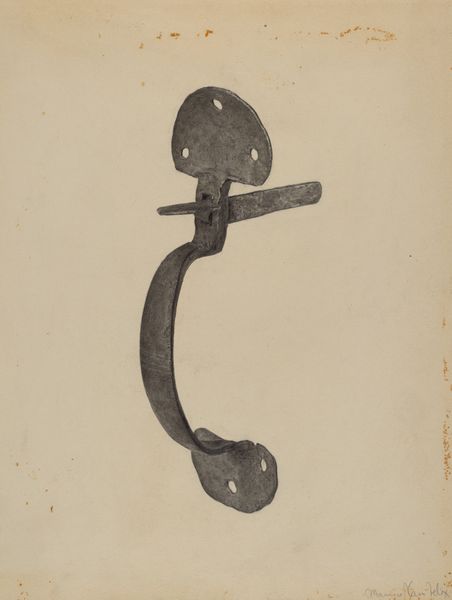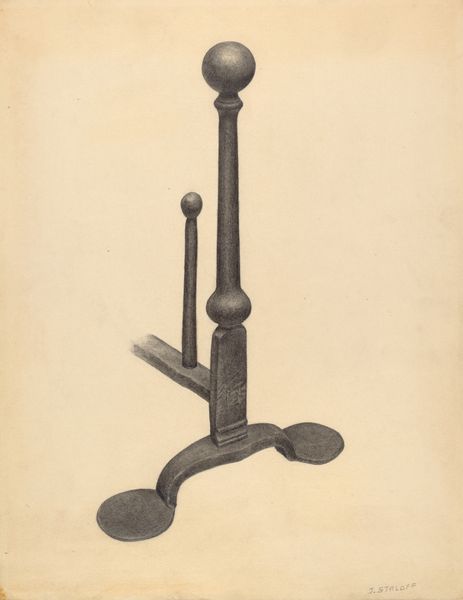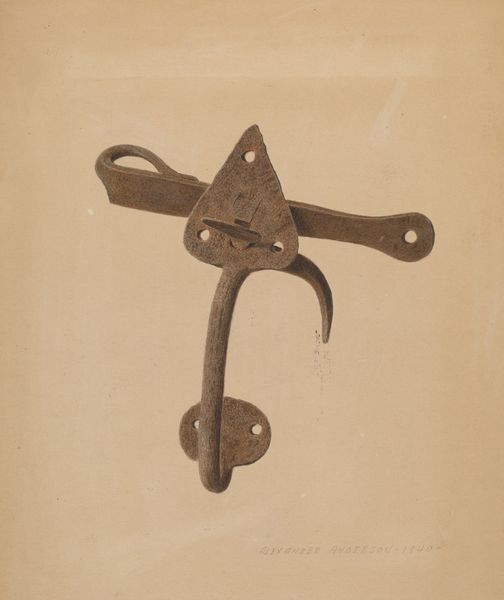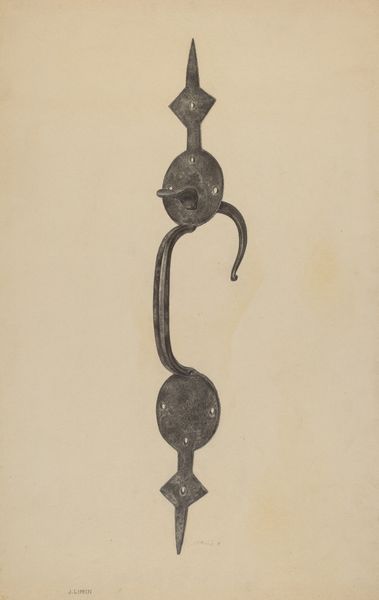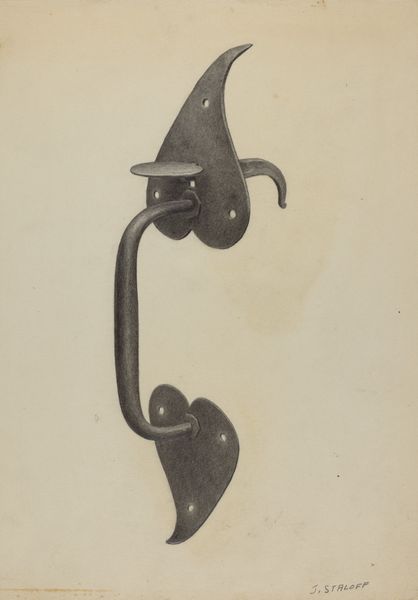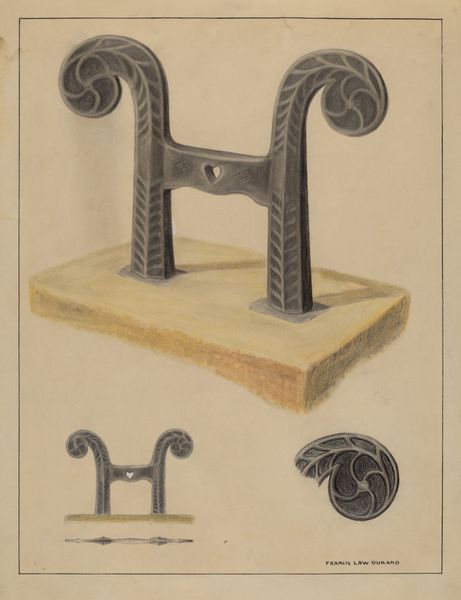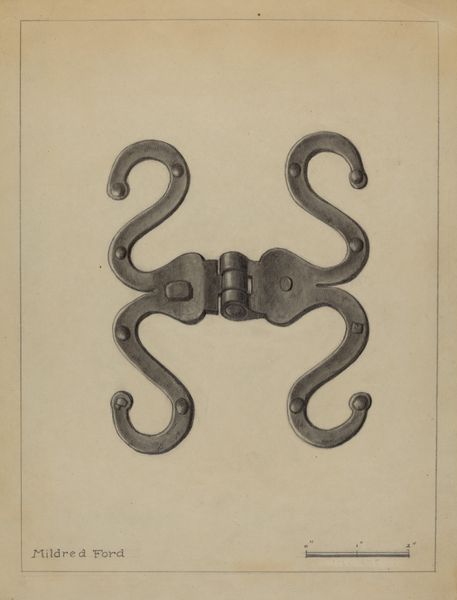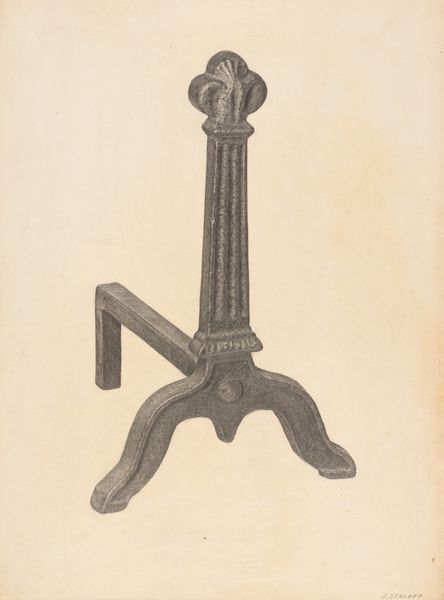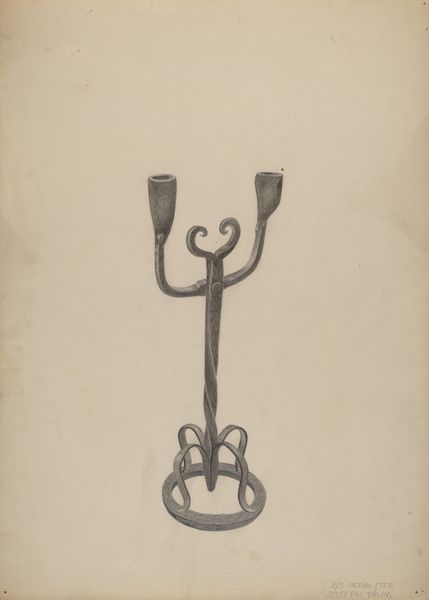
drawing, pencil, graphite
#
drawing
#
pencil drawing
#
pencil
#
graphite
#
realism
Dimensions: overall: 29 x 22.9 cm (11 7/16 x 9 in.) Original IAD Object: 8" high; 6" wide
Copyright: National Gallery of Art: CC0 1.0
Editor: Here we have Jack Staloff's pencil drawing, "Door Handle and Thumb," from around 1936. It’s a striking rendering; the contrast between light and shadow gives real weight to these everyday objects. What catches your eye about it? Curator: The imagery itself speaks volumes, doesn’t it? A door handle, a latch – these aren’t just functional objects, they’re thresholds. Consider the cultural memory embedded in a door: a boundary, an invitation, a marker between public and private, safety and danger. Editor: So, you're saying they're symbolic? Curator: Absolutely! The artist chose *these* specific forms; there’s a rustic, almost medieval quality to the hardware, isn't there? This isn't sleek, modern design. These shapes evoke an older craft, a handmade sensibility and timeless aesthetic that implies endurance. The viewer may subconsciously conjure a history and continuity through design and craftsmanship. What does it suggest to you? Editor: I see that now, they do suggest an older, sturdier time. Curator: And what of the fact that they are isolated, presented against a plain background? Almost like religious iconography of an emblem for security, craft, or even passage through symbolic openings in a personal space. Think about how something like a key or a lock is a visual shorthand across diverse traditions for secrecy, power, and sometimes oppression. How do you interpret their visual absence from this work? Editor: So, instead of being a purely functional drawing, the isolation invites us to project broader ideas about access, history, and craftsmanship onto them. Thanks; I hadn't thought of them that way at all. Curator: The beauty lies in uncovering those layers of meaning that everyday images can conceal.
Comments
No comments
Be the first to comment and join the conversation on the ultimate creative platform.
